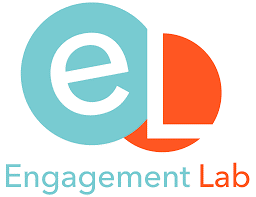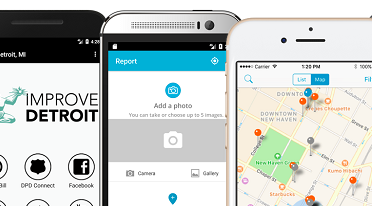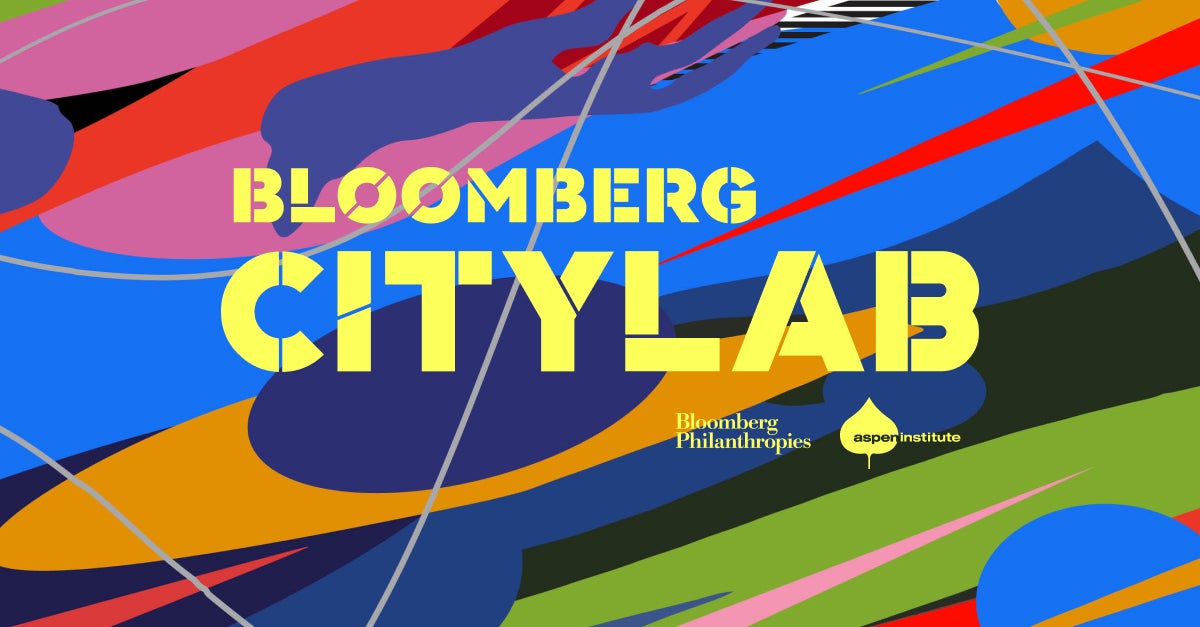Eric Gordon is a professor in the department of Visual and Media Arts at Emerson College,where he is the founding executive director of the Engagement Lab. Eric studies the use of media and technology to facilitate democratic process in the US and abroad. He is specifically interested in the role of play and games in civic participation.
This interview is part of the Aspen Institute Center for Urban Innovation’s series of conversations with inclusive innovation practitioners.
Jennifer Bradley: What does co-creation mean to you?
Eric Gordon: Co-creation is a method of design. It is an intervention into traditional methods where a designer would enter into a situation and get some input and eventually design for a group of people, a community, or a set of venues. Co-creation attempts to change or alter that power dynamic and bring those who were traditionally designed for into the fold so that they can participate in the act of creation and design themselves.

Eric Gordon, Professor, Department of Visual and Media Arts, Emerson College; Founding Executive Director, Engagement Lab
JB: How do you use, or apply it in your own work?
EG: Every aspect of my work is informed by co-design. Every single one of the Engagement Lab’s projects begins with the partner. If it is a project that we are doing with a municipality, designing a technology or a tool together with that municipality, we will go directly to stakeholders and users to inform the process and the ultimate output. Or, if it’s a research project, we will not think about our data collection as extractive, but as having mutual value for both the data collector and those from whom the data is collected. Really it’s a set of values that manifest differently depending on the specific context of a project.
While we bring those values to every project we do, the reality is, if there’s not a lot of funding, we often don’t have the ability to exercise those values as we would want. Still, while we cut corners in some cases because of limitations in budget, we make sure that the project still reflects the value that people need to participate in the design of things that are meant for them.
JB: What are the challenges that come with co-creation?
EG: Well, the challenges are the unexpectedness of outcomes. It makes projects a lot easier if you know exactly what’s going to happen from the beginning. My finance person here is always upset with me because things shift, and it’s not necessarily in our control. It’s our job to be responsive. It doesn’t necessarily fit the traditional model of universities where budgets are very, very controlled.
The other thing is, we run a graduate program where we have students partner with an organization and co-design a project over the course of the year as they are writing their thesis. From both an educator perspective and a student perspective, it can cause lots of anxiety. For the student, their job is to get their thesis done. But what happens when unforeseen circumstances exist? What happens when you start hearing things from your partner that are not necessarily aligned with your need to get your thesis done by April?
So the challenge is in creating a pedagogy around these projects that the students can put these values into. But there’s no other way to do it. It would completely fly in the face of everything I said if we were to launch a project with a clear blueprint and stick to that blueprint through the course of it.
JB: I find in my own work that I worry about meeting funders’ expectations if I move more towards co-creation. We might have some insights into practices of co-creation, but we haven’t entirely built out the supportive institutional infrastructure to support co-creation.
 EG: That’s exactly right. Within the university, we certainly don’t have that infrastructure. For instance, any kind of participatory research or design necessarily is going to take more time for relationship building and dialogue as opposed to data collection and analysis and reporting, which means that for the typical university researcher, your output of journal articles is necessarily going to be lower. We don’t have tenure and promotion standards that accommodate that yet. There’s a lot that needs to happen in order to make universities effective players in this style of working.
EG: That’s exactly right. Within the university, we certainly don’t have that infrastructure. For instance, any kind of participatory research or design necessarily is going to take more time for relationship building and dialogue as opposed to data collection and analysis and reporting, which means that for the typical university researcher, your output of journal articles is necessarily going to be lower. We don’t have tenure and promotion standards that accommodate that yet. There’s a lot that needs to happen in order to make universities effective players in this style of working.
JB: Given that it’s a hard path, what would you tell an organization or person starting to co-create with the people that they’re trying to serve?
EG: The most important thing is leading with values and being able to articulate those values clearly from the beginning. We created an MOU template, which is essentially a template for speaking to community partners in doing this work, where you are able to clearly articulate the mutual benefit in this research or design.
For instance, the typical research relationship between a university researcher and a community would be, “I’m going to study you, and I will generate knowledge about this situation that will indirectly benefit you at some time in the future.” So you have a lot of people volunteering a lot of their time and resources for this very abstract benefit. It is important to shift that relationship, so we say, “This is what I want, this is what you want, as we work together this is what we will achieve together.” That’s something that often gets left out. It doesn’t take a huge amount of effort, but will go a very long way.
JB: You mentioned leading with values. So what are the values that underlie co-creation for you?
EG: Well, mutual benefit is one. That is, the idea that whatever time that people are investing yields a clear benefit to them. Another value is stewardship, meaning that there is a longevity to the work that is produced through capacity building. It’s not extractive, because you’re building the capacity of people to both understand and recreate the work in the future.
JB: Is there anything else that you think readers should know that the questions didn’t elicit?
EG: The challenge with all of this work is that there is an ideal condition, and then there’s the reality of the situation in which people are constantly negotiating between their own desires to do work in a particular way and their institution’s values. I might do something with a certain value set, but that value isn’t matched by my university, or the organization that I work for or with whom I’m partnering. It’s really important, as we talk about co-creation and co-design, that we talk about it as an ideal condition and strive to achieve it, but also understand that the practice is messy and will take different shapes. Instead of saying, “That’s not good practice,” we need to understand that people are engaged in complex and messy processes of negotiation.
This interview has been edited and condensed for clarity.
This blog series is supported by the Citi Foundation, a vital early supporter of the Center for Urban Innovation at the Aspen Institute. With the Citi Foundation’s help, the Center convened leading-edge practitioners to develop a shared set of principles to guide a cross-sector approach to inclusive innovation in low- and middle-income neighborhoods, and to determine how the Aspen Institute could support this practice.

